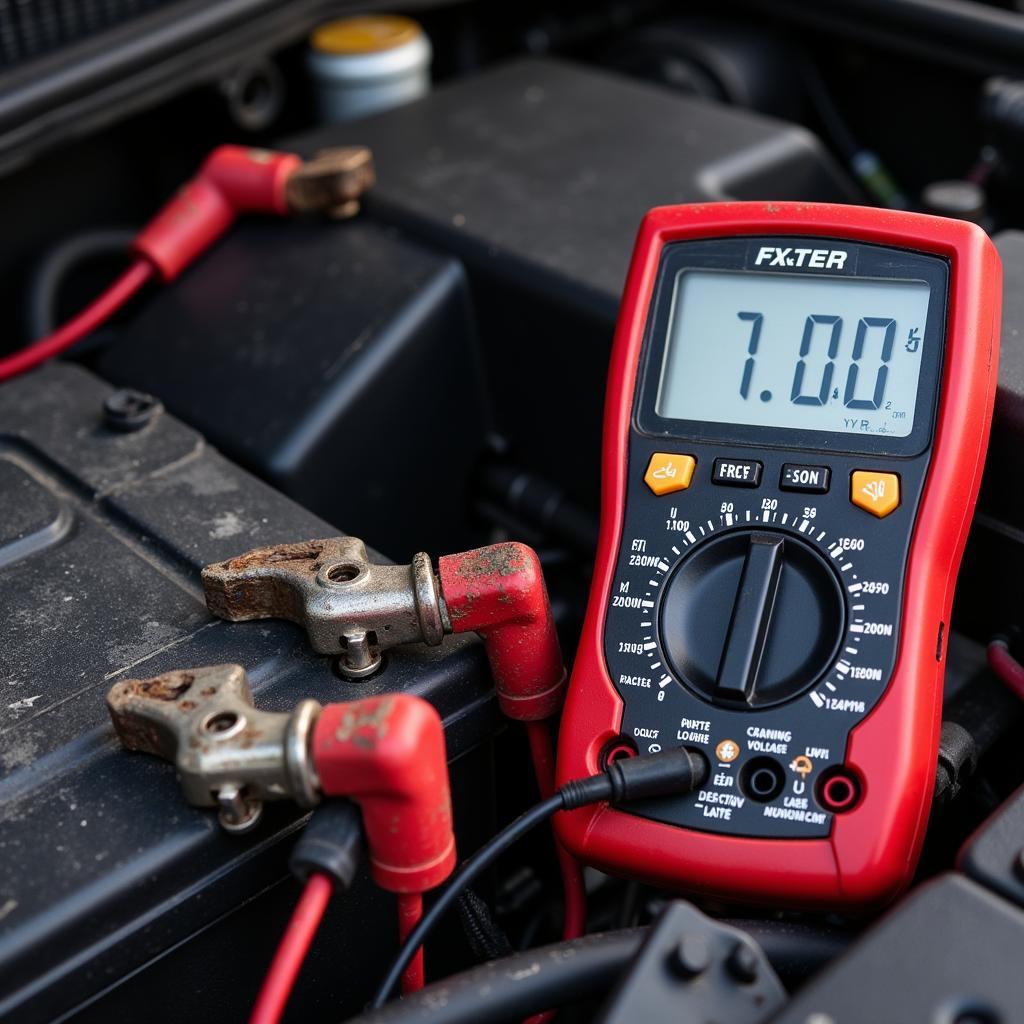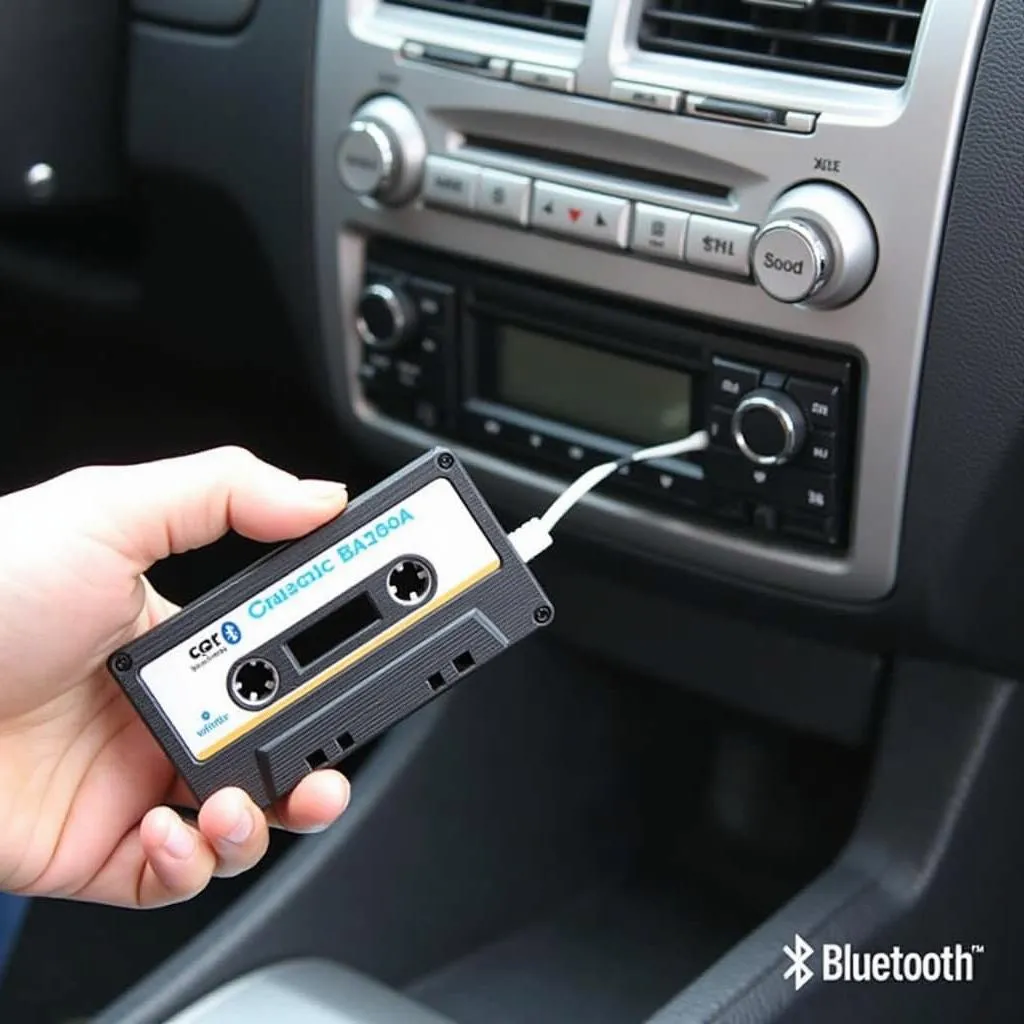A single bad cell in your car battery can cause a cascade of frustrating problems, from sluggish starts to complete electrical failure. Understanding how to identify and address this issue is key to keeping your vehicle running smoothly. This article provides a comprehensive guide on diagnosing, troubleshooting, and resolving the problem of “one bad cell in car battery”.
Identifying a Bad Cell in Your Car Battery
A car battery comprises multiple cells, typically six, working together to provide the necessary voltage. A single failing cell weakens the entire battery, impacting its ability to hold a charge and deliver power. Several telltale signs indicate a potentially bad cell.
- Low Voltage: The most obvious symptom is a low voltage reading. A healthy 12-volt battery should read around 12.6 volts or higher when the engine is off. A significantly lower reading, especially below 12.2 volts, suggests a problem, potentially a bad cell.
- Slow Cranking: If your engine cranks slowly or struggles to turn over, a bad cell could be the culprit. The reduced voltage hinders the starter motor’s ability to draw sufficient power.
- Dim Headlights: Noticeably dimmer headlights, especially when the engine is idling, can indicate a failing cell. The battery struggles to maintain the required voltage to power the lights effectively.
- Electrical Malfunctions: Intermittent issues with other electrical components, such as the radio, power windows, or interior lights, can also point to a bad cell.
- Sulfation: A white, powdery substance around the battery terminals, called sulfation, can occur due to a bad cell and chronic undercharging. This further hinders the battery’s performance.
 Bad Car Battery Cell Symptoms
Bad Car Battery Cell Symptoms
Testing for a Bad Cell: Methods and Tools
Accurately diagnosing a bad cell requires specific tools and techniques. While a simple voltage check provides initial clues, a more thorough examination is crucial.
- Multimeter Test: A multimeter can measure the voltage of individual cells. This requires accessing the cell caps, usually hidden under a plastic cover. Each cell should measure around 2.1 volts. A significantly lower reading in one cell confirms the issue.
- Hydrometer Test: A hydrometer measures the specific gravity of the electrolyte within each cell, indicating its charge level. A lower reading in one cell compared to the others suggests a problem.
- Load Test: A load test simulates the demands placed on the battery during starting. This helps identify weaknesses that might not be apparent during a simple voltage check. A professional mechanic can perform a load test using specialized equipment.
Can You Fix One Bad Cell?
Unfortunately, individual cells within a car battery are not typically repairable. The construction of modern sealed batteries makes it impractical to access and replace a single cell.
“Trying to repair a single cell is generally not advisable,” advises John Smith, Lead Automotive Electrical Engineer at AutoTech Solutions. “The internal structure of sealed batteries makes it difficult, and the potential risks outweigh the benefits. Replacement is the recommended course of action.”
Replacing the Battery: A Necessary Step
When a bad cell is confirmed, replacing the entire battery is the most effective solution. Attempting to continue using a battery with a faulty cell can lead to further complications, including damage to the vehicle’s electrical system.
Choosing the Right Replacement Battery
Selecting the correct replacement battery is vital for optimal performance and longevity. Factors to consider include:
- Group Size: Consult your vehicle’s owner’s manual or the battery’s label to determine the correct group size. This ensures the battery fits properly in the battery tray.
- Cold Cranking Amps (CCA): CCA measures the battery’s ability to start the engine in cold weather. Choose a battery with a CCA rating that meets or exceeds your vehicle’s requirements.
- Reserve Capacity Minutes (RC): RC indicates how long the battery can power essential accessories if the alternator fails. A higher RC offers greater peace of mind.
Conclusion
Addressing a bad cell in your car battery promptly is crucial to avoid potential problems and ensure reliable vehicle operation. By understanding the signs, utilizing the correct diagnostic tools, and choosing the right replacement battery, you can maintain your vehicle’s electrical system and enjoy a smooth, trouble-free driving experience. Don’t let one bad cell leave you stranded – take proactive steps to keep your car running at its best.
“Regular battery maintenance, including cleaning terminals and checking voltage, can help prevent premature cell failure,” adds Maria Garcia, Senior Automotive Technician at CarCare Experts. “Early detection can save you time and money in the long run.”
FAQ
- Can a bad cell cause the car not to start? Yes, a bad cell significantly weakens the battery, potentially preventing it from providing enough power to start the engine.
- How long does a car battery last? Typically, a car battery lasts between 3 to 5 years, depending on usage and climate conditions.
- Can I jump-start a car with a bad cell? While jump-starting might temporarily get the car running, it doesn’t fix the underlying issue. The bad cell will continue to cause problems.
- Is it dangerous to drive with a bad battery cell? Yes, driving with a bad cell can lead to electrical system malfunctions, potentially causing unexpected breakdowns and even damage to other components.
- How much does it cost to replace a car battery? The cost varies depending on the battery type and vehicle, but typically ranges from $50 to $200.
- How can I prevent a bad cell in my car battery? Regular maintenance, such as cleaning terminals and ensuring the battery is properly charged, can help prolong its lifespan.
- Can a bad alternator cause a bad cell in the battery? A malfunctioning alternator can undercharge or overcharge the battery, potentially damaging the cells and shortening its lifespan.



